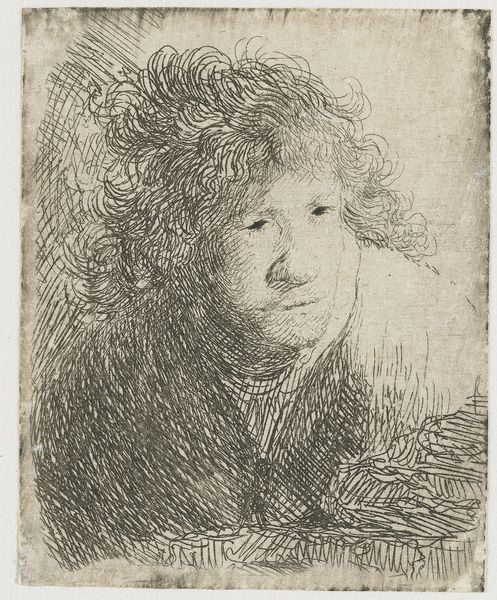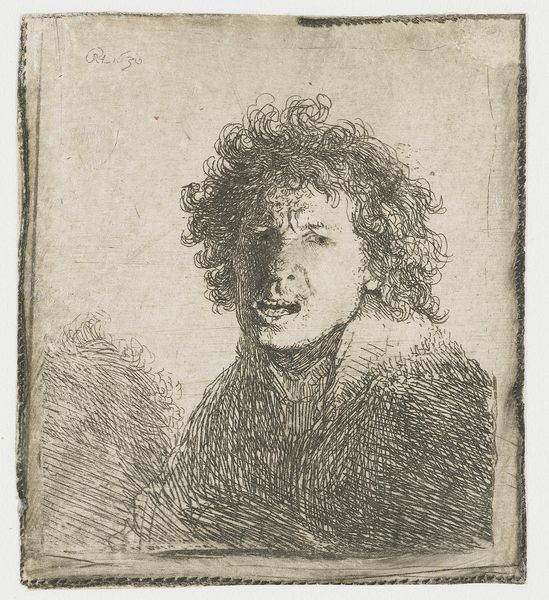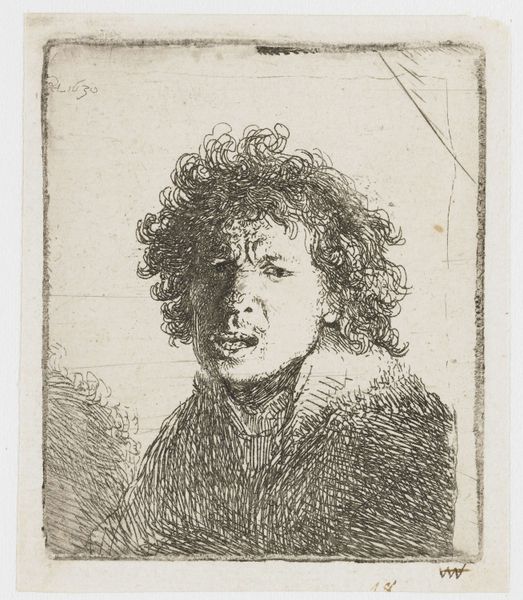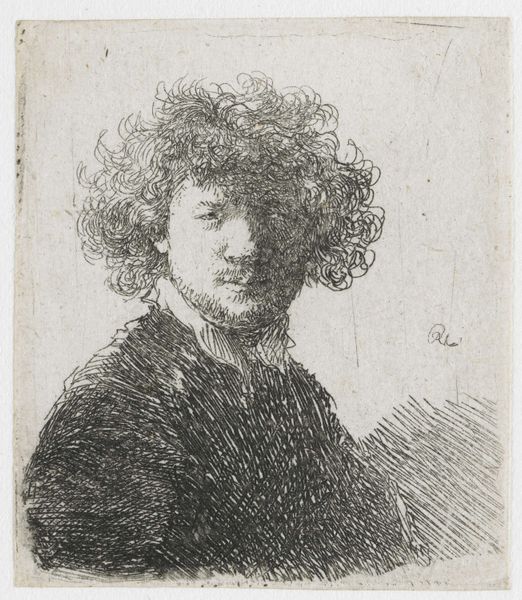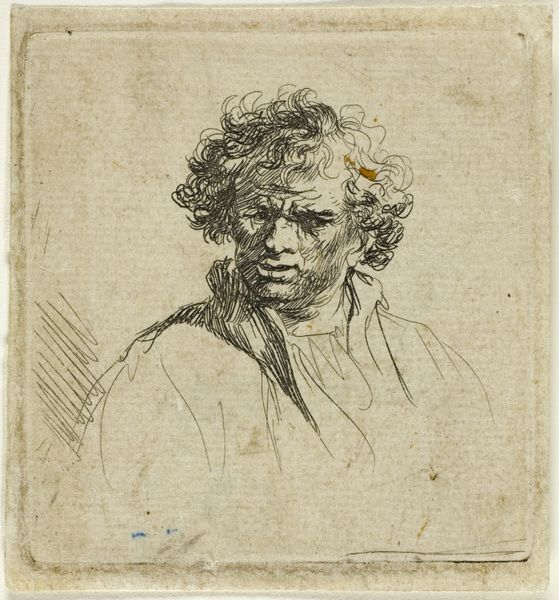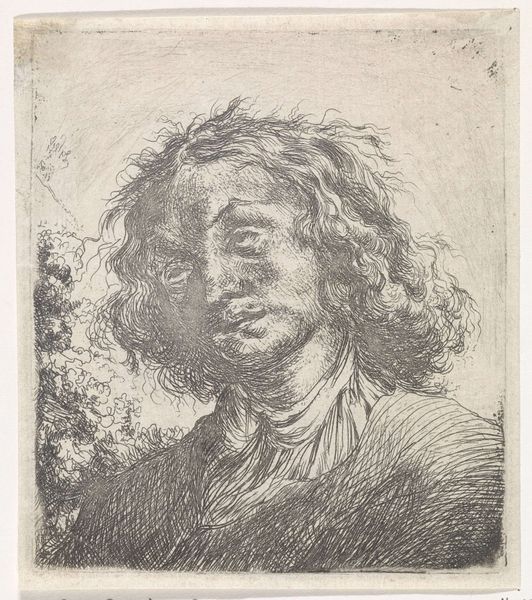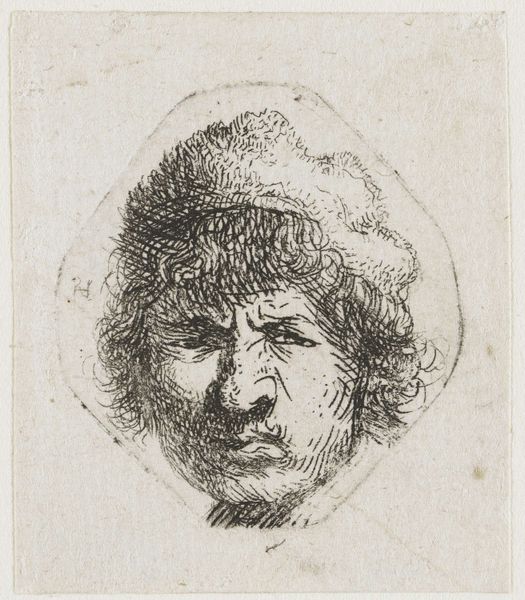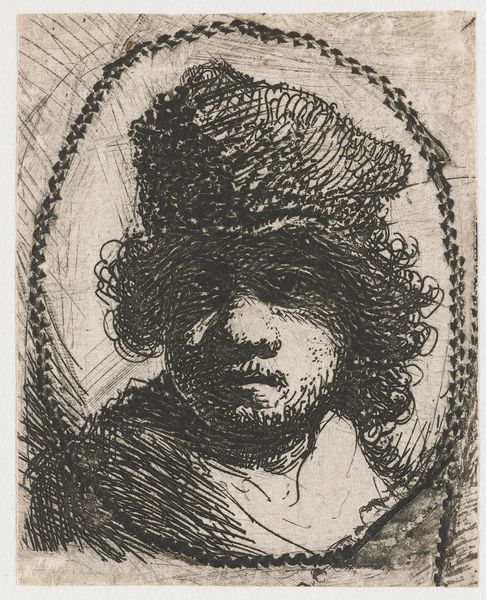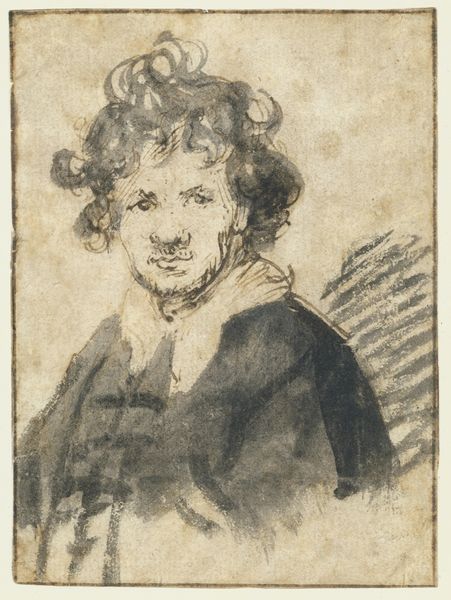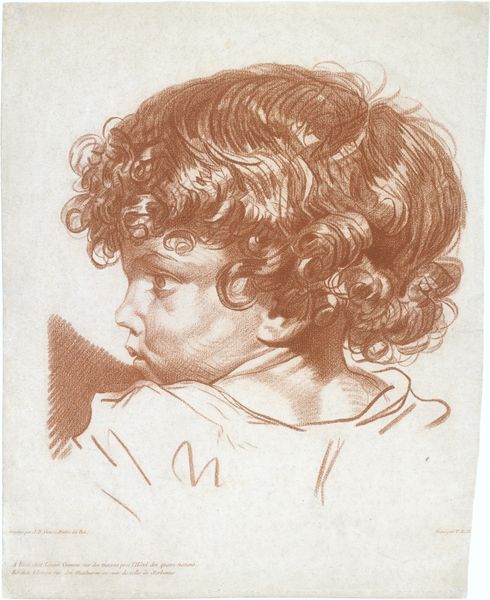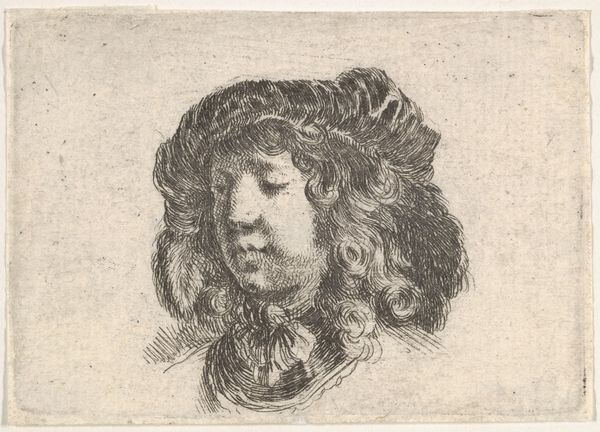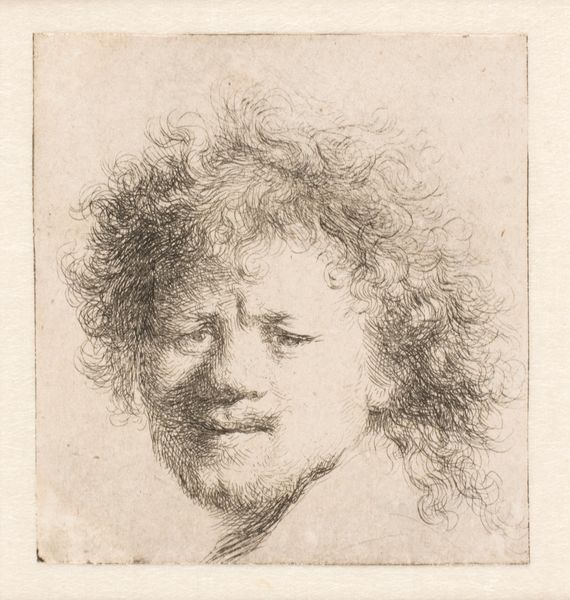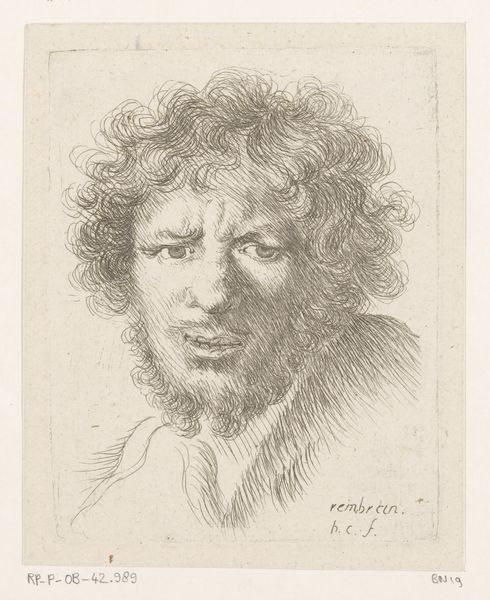
drawing, paper, ink
#
portrait
#
drawing
#
self-portrait
#
baroque
#
paper
#
ink
#
line
Copyright: Public domain
Rembrandt van Rijn made this self-portrait using etching, a printmaking technique, sometime in the mid-17th century in the Dutch Republic. It’s one of dozens of self-portraits Rembrandt created throughout his career, each offering a glimpse into his evolving self-perception and artistic experimentation. Unlike commissioned portraits of the Dutch elite, these self-portraits served as a form of artistic exploration and self-promotion. The Dutch Republic was experiencing a golden age of economic prosperity and cultural flourishing. The art market was booming, and artists like Rembrandt sought to establish their reputations and attract patrons. Self-portraits became a means of showcasing their skill, creativity, and individuality. By studying Rembrandt's etchings, alongside historical documents such as letters, inventories, and biographies, we gain a deeper understanding of the artist's world and the social forces that shaped his artistic practice. Ultimately, this etching serves as a reminder of the social context of art and the role of the art historian in its interpretation.
Comments
No comments
Be the first to comment and join the conversation on the ultimate creative platform.

